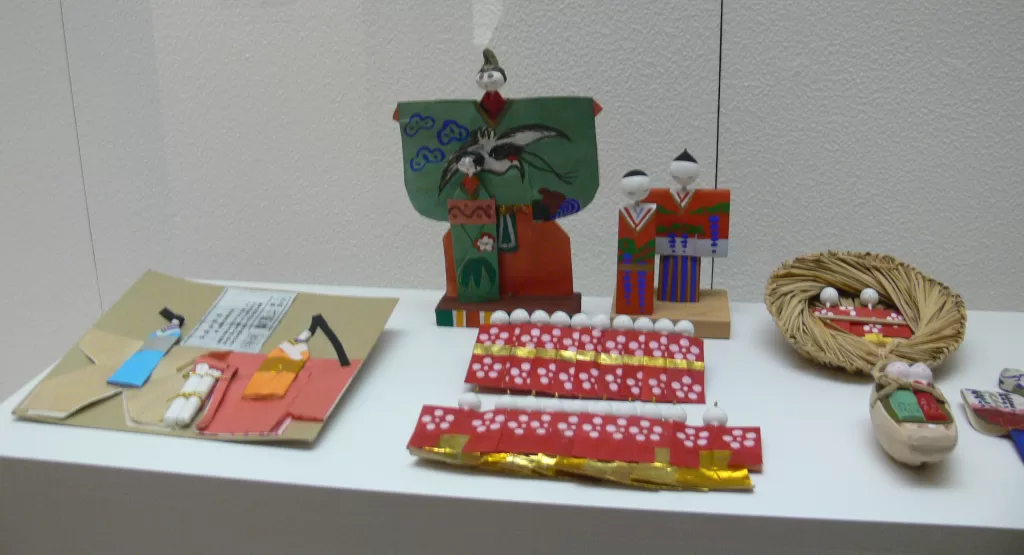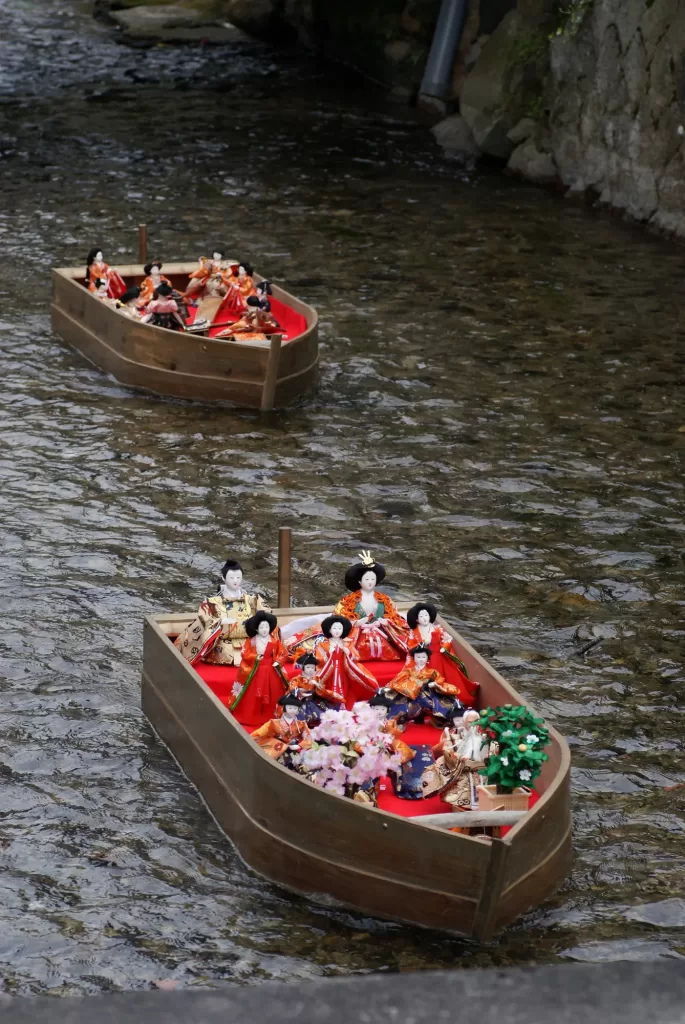Nagashibina Ceremony on Girl’s Day
Japan’s annual Hinamatsuri, also known as Girls’ Day, is a traditionally significant event held every March 3rd. Its main purpose is for families to pray for the health and happiness of their young daughters. One unique custom observed on this day is the nagashibina ceremony, which takes place at the Shimogamo Shrine in northern Kyoto.
The nagashibina ceremony is initiated with two individuals, representative of a man and woman from old court-style regalia, much similar to the hina ningyō dolls themselves. They descend to the Mitarsahi River’s staircase located within the shrine compound, carrying with them ‘nagashibina,’ or paper dolls, which they place on the water surface before reciting prayers. It’s one of the most awaited Kyoto events in March.

The Significance of Nagashibina
Nagashibina are much simpler in design compared to the more ornate hina dolls usually displayed during Hinamatsuri and are often made from colored paper. Their purpose extends beyond prayer for a girl’s health and growth; it is believed that they can attract negative forces away from the child, as these forces will choose to follow the doll instead.
This practice stemmed from old customs dating back eight hundred years to Japan’s Heian period. Tradition dictates that by sending these dolls down a purifying river path, any evil forces that could harm a child would be drawn toward the doll and sent away with it downstream.

Participating in Nagashibina
Visitors are encouraged not only to observe but also partake in the celebration by floating their own nagashibina downriver. To encourage participation, nagashibina sets can be purchased ahead of time from 10 a.m., for around ¥500 for the smaller dolls and around ¥1,000 for larger variants.
While initially meant as an observance for children’s wellbeing, taking part in setting up nagashibina has been opened to all attendees wanting to experience this age-old cultural practice first-hand.
Say Hello To Hina Ningyo Dolls
In addition to nagashibina, another vibrant highlight of Girl’s Day at Shimogamo Shrine includes viewing intricately dressed hina ningyō dolls or ‘hina dolls.’
These dolls aren’t designated playthings as much as they are commemorative displays lined up on tiered lacquered staircases according to their rank depicting an old Heian-style Japanese court setting. On top stands Odairi-sama (the Emperor doll) and Ohina-sama (Empress doll), surrounded by minuscule courtiers, musicians, and warriors ranked below them.
A special display session happens within the shrine’s main hall between 9:30 a.m. and 10 a.m., where visitors can snap pictures of these detailed symbols of tradition before other activities ensue.
Witness Junihitoe Kimono Dressing
Following hina ningyo photography at 10:30 a.m., visitors can continue their cultural immersion by witnessing junihitoe kimono dressing – one of Japan’s most refined traditional aparrels worn at court during Heian times.
Transforming into this twelve-layered robe requires skillful expertise due to its demanding complexity of systematic layers and well-defined color arrangements – an experience many tourists come early to catch firsthand.
Numerous elements combined make Hinamatsuri an unforgettable event – from launching nagashibinas into rivers sending away ill luck; displaying delicate hina ningyo dolls that beautifully represent Japanese history; witnessing Heian-era junihitoe kimono dressing rituals – each providing unique moments for long-lasting memories.
By the way, if you love nature, you should experience the enchanting Cherry Blossom Night Time Illumination at Maruyama Park in Kyoto, Japan. Marvel at the magnificent Shidarezakura (weeping cherry tree) illuminated every evening during the sakura blossom season.